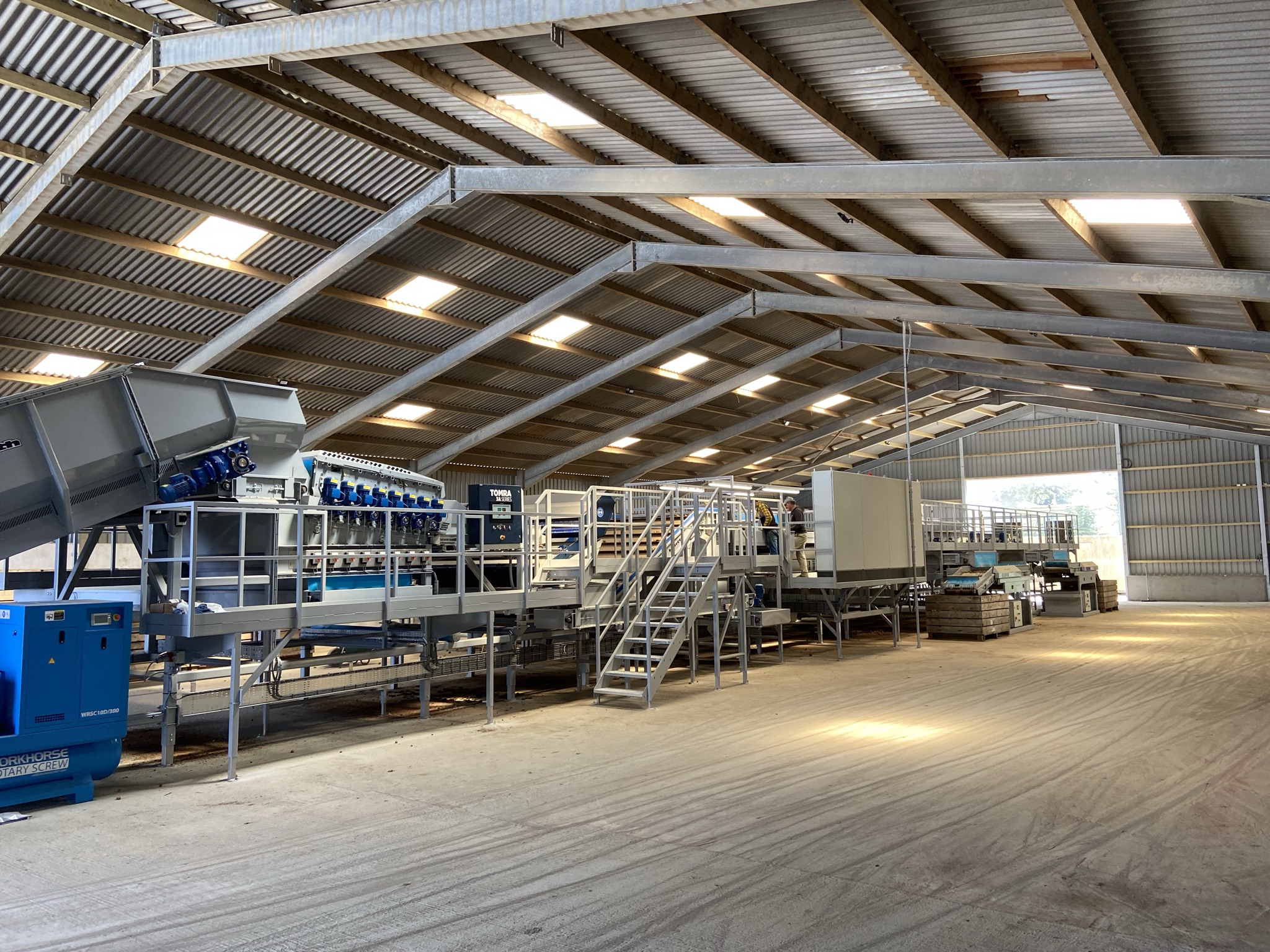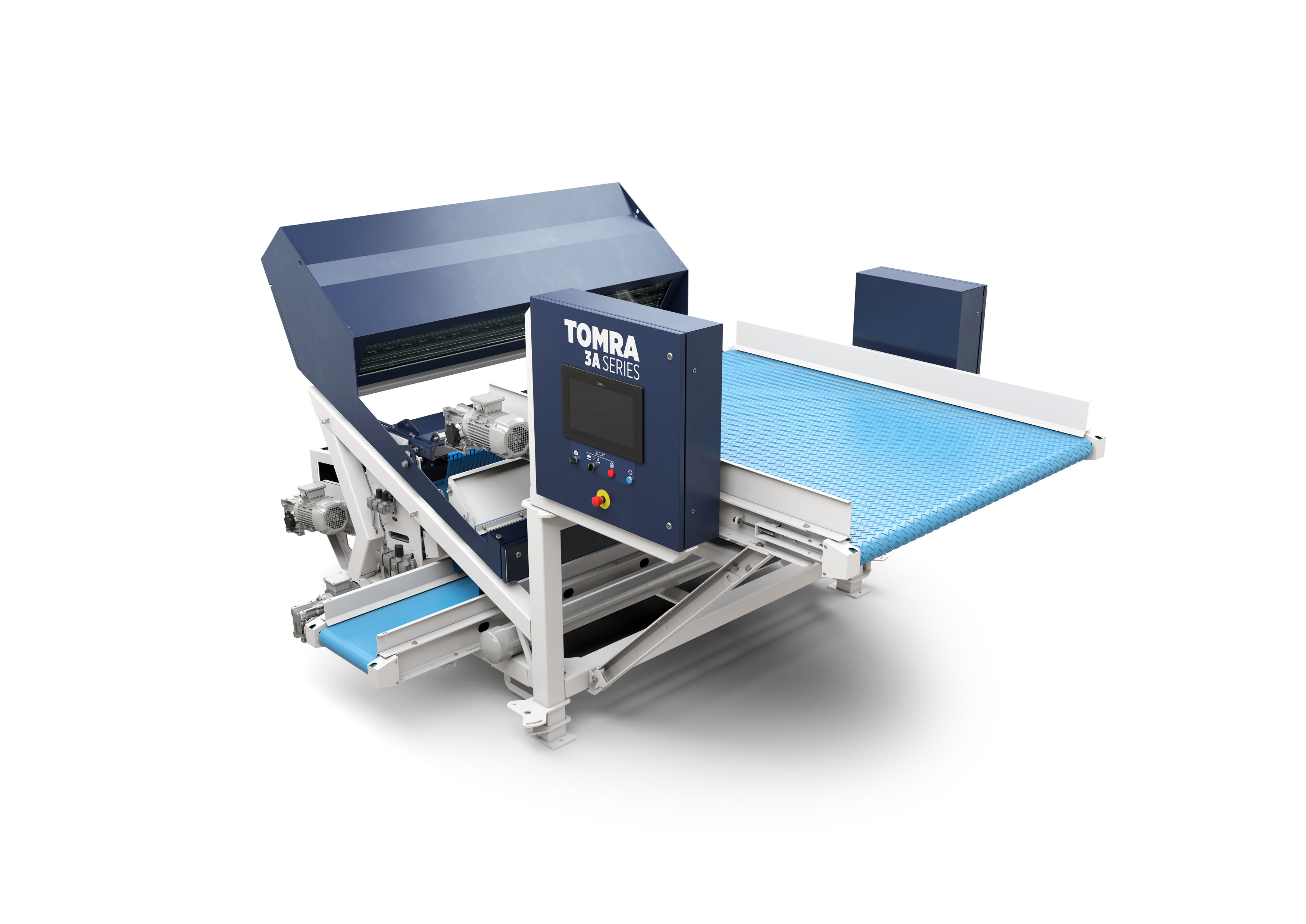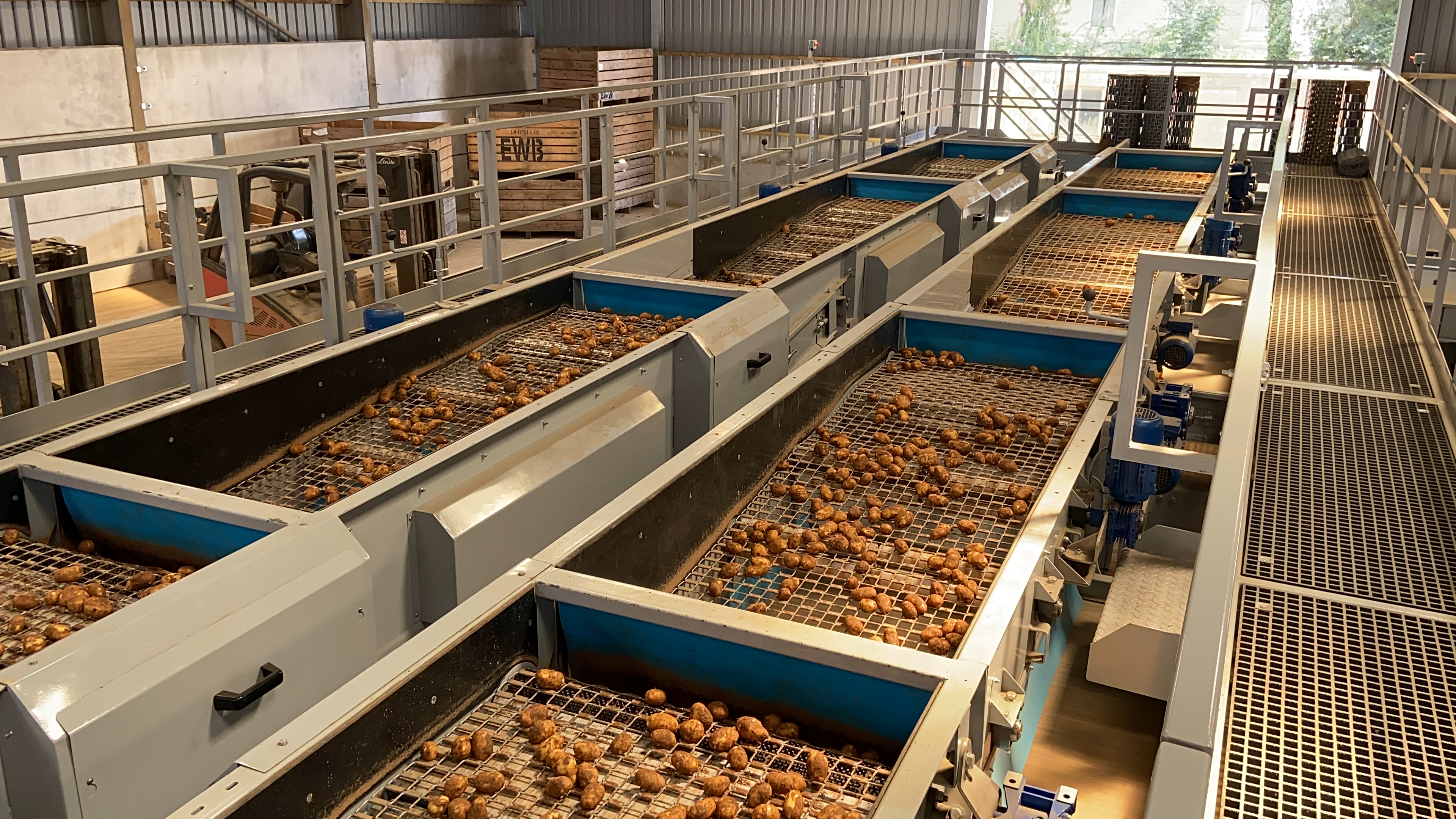The TOMRA 3A is typically located near the entrance to a potato storage shed, where it cleans up freshly harvested crop after it passes through a mechanical grader and soil removal equipment. This machine is designed to operate at high capacity, working at a rate of up to 100 tons per hour, and is compact enough to be moved easily from shed to shed.
The TOMRA 3A incorporates high-resolution cameras and near-infra-red (NIR) spectroscopy. These inspection technologies can distinguish between organic matter (the crop) and inorganic matter (foreign materials), identify zero-value green potatoes, and recognize good crop worth keeping even if it is heavily coated in soil. Optical equipment has no moving parts, minimizing maintenance requirements, and is located in a fully sealed box to withstand rain, wind, dust and heat.
The TOMRA 3A is so effective, it removes 95% of rocks, floating stones, dirt clods and corn cob, plus 85% of other typical foreign materials. This means a potato grower’s customers (typically packers and processors) can be confident of receiving high-quality product with little or no unwanted materials or unacceptable crop.

Another advantage of using an optical sorter, at a time when more growers are finding it difficult to recruit staff, is that it reduces dependence on manual labor, as well as making it possible to redeploy staff farther down the line where they can do more to add value by further enhancing product quality.
Additionally, the TOMRA 3A greatly reduces the amounts of unmarketable materials going into the storage shed. This makes better use of precious storage space, eliminates the expense of keeping cool materials that have no value, and reduces the risks of potato rot, breakdown, and product loss in storage.
The TOMRA 3A can be connected to the cloud-based data platform TOMRA Insight, available as a subscription service. Accessing live data from sorting machines enables operators to make improvements to line efficiencies; accessing historical data makes it possible to quantify the standard of raw materials from suppliers and make better-informed business decisions.
www.tomra.com

